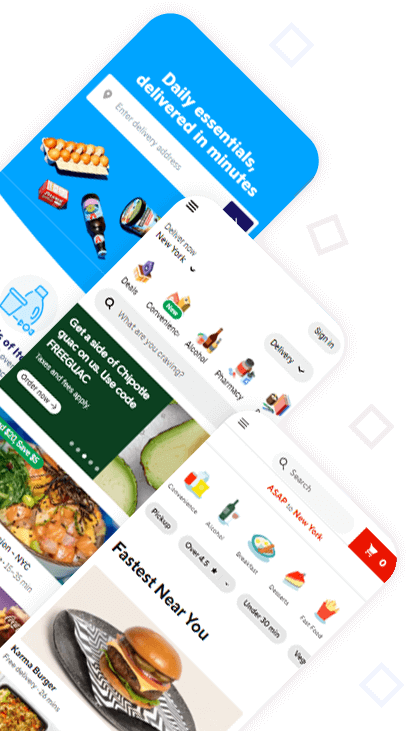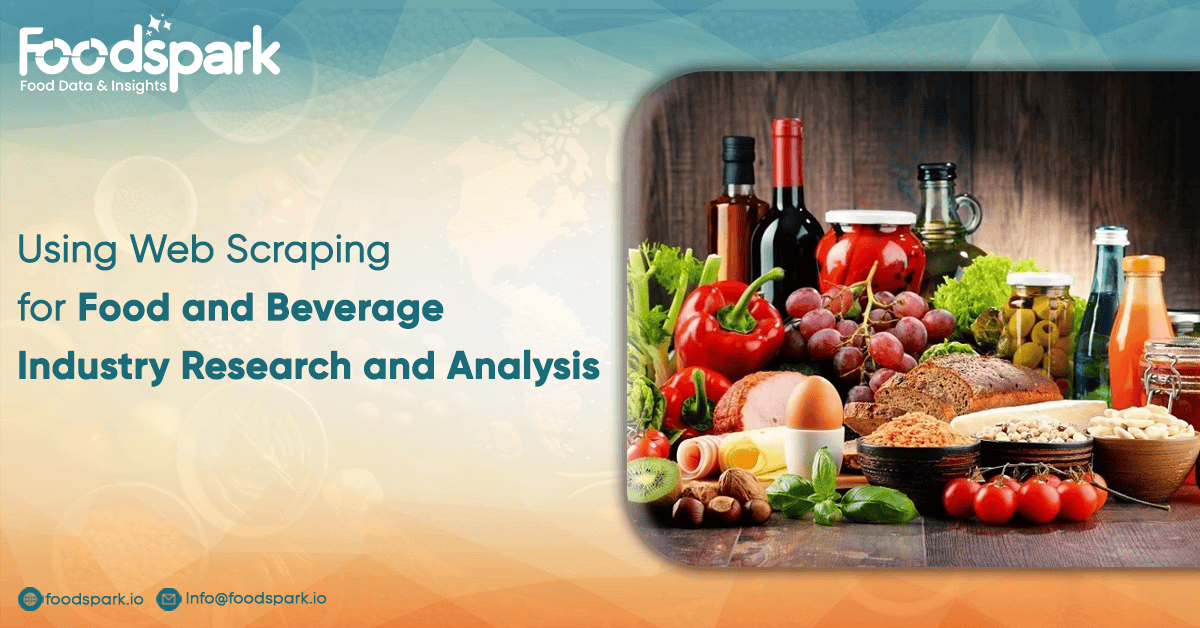Let's talk!
We'de love to hear what you are working on. Drop us a note here and we'll get back to you within 24 hours.

We'de love to hear what you are working on. Drop us a note here and we'll get back to you within 24 hours.

Are you hungry for the secret that’ll boost your food and beverage business? Web scraping is your digital helper that seeks out the latest market trends, competitor strategies, and customer preferences from the huge online feast. Want to know how you can gather all this rich data? In this blog, we’ll dish out everything you need to know to harness the power of web scraping to transform your research and analysis, giving you the insights you need to stay ahead of the curve.
Web scraping uses automated tools to collect information from various sources. Imagine going through mountains of online information and meticulously collecting specific details – web scraping tools do this programmatically, saving you time and effort.
In the context of food and beverage research, web scraping can be used for various purposes:
By using web scraping to collect data automatically, you can create a complete picture of the food and beverages industry without missing out on any details. This method ensures you gather all the information you need.
By understanding and using information wisely, businesses can work better, reach the right customers, and make more money. Here’s how analyzing food data analysis helps businesses:
Understanding Customer Preferences: Food data analysis goes beyond just sales numbers. It explains what customers buy, how often they buy it, and even what they say online about your products. This helps businesses make their products match what certain groups of customers want, create ads that will appeal to these customers, and keep up with changing trends.
Optimizing Inventory Management: Imagine never running out of your most popular ingredients or throwing away expiring products. Food data analysis can forecast changes in what customers want to buy, help keep the right amount of stock, and reduce waste. This means a business runs more efficiently, spends less money, and keeps customers happy because they always find what they want.
Sharpening Pricing Strategies: Data analysis isn’t just about selling more; it’s about selling at the right price. Businesses can set prices that maximize profits without alienating their customer base by analyzing competitor pricing, ingredient costs, and customer price sensitivity.
Enhancing Quality Control: Data analysis can be a powerful tool for maintaining consistent quality. By closely monitoring how their products are made and spotting problems early, businesses can prevent mistakes and ensure their products are top quality. This makes customers trust the business more and remain loyal over time.
Informed Marketing Decisions: Data analysis helps businesses determine which types of advertising work best to reach their customers. This allows them to spend their advertising money more wisely and get the most value out of it.
Choosing a food data analysis company means you can benefit from using data without having to deal with complicated tech stuff. They know what they’re doing and have smart tools. This gives you a big leg up in the food and beverages industry.
Expertise: Food data analysis companies specialize in food and drinks businesses. They really get the market, know where to get the right information, and understand the problems you might run into. This means they can give you useful advice and insights about your needs.
Streamlined Workflow: Partnering with a food data analysis company allows you to offload the burden of data collection and processing. This supports your internal resources to focus on core business activities while still gaining valuable insights.
Advanced Analytics: These companies use smart data analysis methods to learn more from your data. They might find trends you didn’t see, make forecasts, and do complex math studies. And they do all this with your business in mind, focusing on what you need.
Actionable Recommendations: Data is valuable, but actionable insights are what drive real change. Food data analysis companies don’t just present findings; they translate them into practical recommendations tailored to your specific business goals.
Cost-Effectiveness: Having your own team to analyze data can cost a lot of money. Hiring an outside company that knows how to do this can save money, which is especially helpful for smaller businesses.
Access to Cutting-Edge Technology: Data analysis companies use the latest tech like machine learning and AI. This means they can get more useful information from your data than you could on your own.
Food data analysis scraping services can help you collect different kinds of information, depending on your needs. Here are some common examples:
Partnering with the right food data analysis services company can be a game-changer. But with numerous options available, how do you identify the ideal fit for your business needs? Here are some key factors to consider:
As you’ve seen, how web scraping tools can serve up major insights to boost your business. But putting it into practice can seem as tricky as a new recipe. That’s where services like Foodspark come in. As a food data scraping service company, we deliver accurate, real-time data for varied food industry segments. Whether you need insights into consumer preferences, a deep dive into competitor strategies, or staying ahead with market trends, our food data analytics services are at your service.
January 21, 2025 B2B marketplaces use data collection to expand and maintain relevance in the food industry. Organizations can improve...
Read moreJanuary 2, 2025 Web scraping has now become an important strategy in the accelerating world of e-commerce, especially for businesses...
Read more